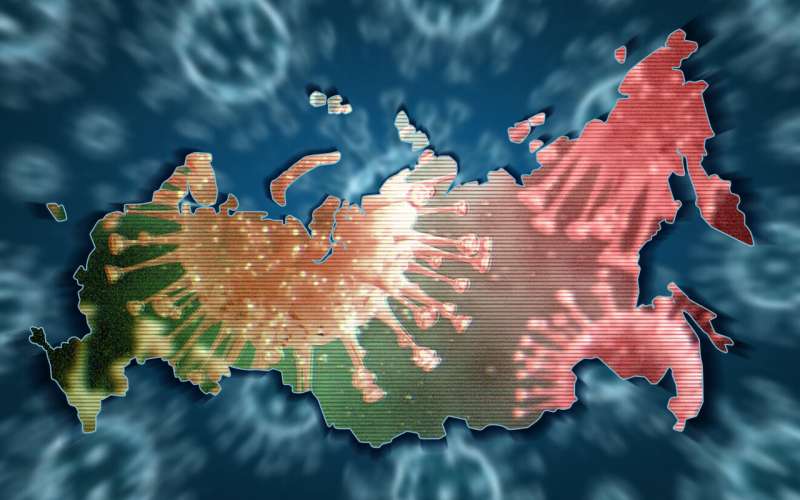Mathematicians specify the criteria for the emergence of Turing patterns

Turing patterns are mathematical expressions of the structures formed in chemical and biological systems, such as spots and stripes on the animal skin. A team of scientists from RUDN University found out that the traditional mathematical conditions of their existence failed to describe the whole range of real-life cases, and that the criteria of their emergence are more flexible. The results of the study were published in Chaos: An Interdisciplinary Journal of Nonlinear Science.
Turing patterns are stable structures that emerge in chemical and biological systems, such as leaves of trees, tentacles of animals, or spots on animal skin, all situated at a given distance from one another. The existence of such patterns was predicted by the British mathematician Alan Turing in 1952. Mathematically, these structures are described by a system of reaction-diffusion equations with two or more interacting elements. The team of mathematicians from RUDN University widened the range of common criteria for the emergence of these patterns in reaction-diffusion systems.
According to Turing's standard model, a system of two elements requires certain conditions for the patterns to emerge. One of the elements should self-activate, i.e., stimulate its own further growth. The second element should self-inhibit, that is, continuously reduce its own activity. Moreover, the mobility (or diffusion coefficient) of the latter should be higher than that of the former to a degree that depends on the values of other systemic parameters. However, this is not true for real-life chemical and biological systems, where the difference between the mobility of the activator and the inhibitor is usually very little. Therefore, there is only a narrow range of values that other systemic parameters can have for the structures to be formed.
"The mechanism suggested by Turing is unstable: The slightest accidental change of model parameters can prevent the structures from forming, and an animal will have no skin patterns or certain organs. However, some recent works indicate that in multi-component systems Turing patterns can form in violation of the common concepts. Namely, studies confirmed the existence of systems with one immobile element in which Turing patterns emerge regardless of the diffusion coefficients of the mobile ones," said Maxim Kuznetsov, Ph.D. and a junior researcher at the Center for Mathematical Modeling in Biomedicine, RUDN University.
According to the team, if a system contains an immobile element (neither a self-activator nor a self-inhibitor), the range of criteria for the emergence of Turing patterns widens considerably. The nature of the interaction between the immobile and mobile elements starts to play a key role in the process. There are three possible types of such interaction: an increase in the concentration of one element can stimulate the growth of the other, inhibit it, or have no effect on it at all. In certain interaction schemes, Turing patterns form regardless not only of mobile element diffusion coefficients but also of the values of other systemic parameters.
"These criteria provide for a considerably complex but more stable mechanism of the formation of Turing patterns. While the reaction speed in biology can vary widely, the types of relations between elements are usually strictly fixed. It is yet unknown whether this mechanism works in natural systems, but all its conditions are in line with the laws of biology. Moreover, given the fact that the development of life is subject to the laws of evolution, this mechanism is likely to be widely spread in nature due to its high stability," added Maxim Kuznetsov.
Posted with STEMGeeks
Congratulations @artforhive! You have completed the following achievement on the Hive blockchain and have been rewarded with new badge(s):
Your next target is to reach 20 posts.
You can view your badges on your board and compare yourself to others in the Ranking
If you no longer want to receive notifications, reply to this comment with the word
STOPTo support your work, I also upvoted your post!
Support the HiveBuzz project. Vote for our proposal!